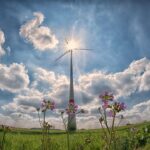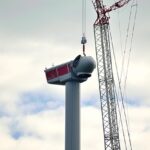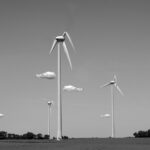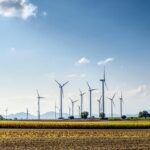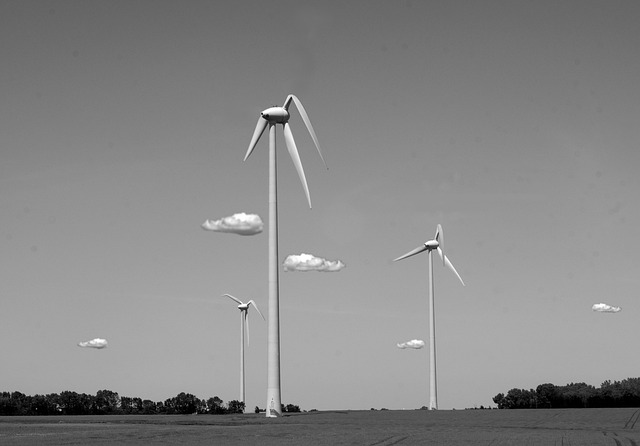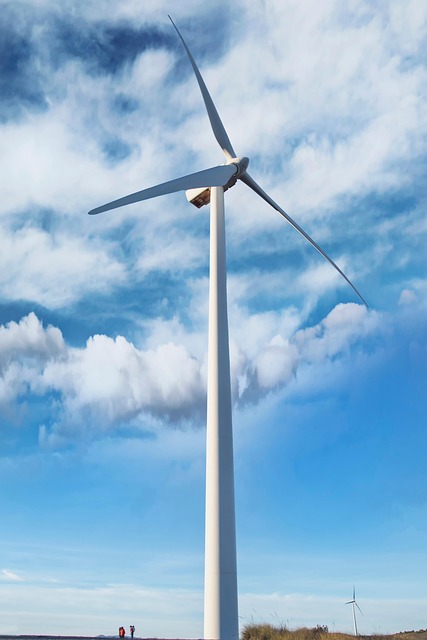The Art and Science of Wind Farm Design
As the world increasingly turns towards sustainable energy solutions, the design and implementation of wind farms have taken center stage in the quest for clean power. Wind energy, harnessed through turbines that convert kinetic energy into electricity, is one of the fastest-growing renewable energy sources globally. However, the design of a wind farm is not merely about erecting turbines in a suitable location; it is a complex interplay of engineering, environmental science, and social considerations. This article explores the multifaceted process of wind farm design, highlighting both its artistic elements and scientific foundations.
The Importance of Site Selection
The initial and perhaps the most crucial step in wind farm design is site selection. The chosen location directly influences the wind farm’s energy production potential, environmental impact, and community acceptance.
Topography plays a vital role in this process. Wind patterns can be significantly affected by mountains, valleys, and other geographical features. Therefore, conducting a thorough wind resource assessment is necessary to determine the average wind speeds and frequency of gusts in potential areas. Measurements are typically taken at various heights using meteorological towers over a year or more to ensure accuracy.
Environmental considerations are also paramount in site selection. Developers must conduct extensive environmental impact assessments (EIAs) to evaluate how the installation might affect local wildlife, habitat, and ecosystems. Sensitive areas, such as migratory bird routes or endangered species habitats, may be identified as off-limits for development.
Community acceptance is another critical factor. Engaging with local residents and stakeholders through public meetings and consultations helps address concerns about noise, aesthetics, and potential impacts on property values. The goal is to create a transparent process that fosters collaboration and understanding between the developers and the community.
Turbine Design and Technology
Turbine technology is at the heart of wind farm design. Modern wind turbines have evolved significantly since their inception and continue to advance in efficiency and energy output.
Several components are central to turbine design. The rotor blades, typically made from lightweight composite materials, must withstand high winds while capturing as much kinetic energy as possible. Blade length significantly affects the energy output; longer blades can capture more wind, leading to enhanced efficiency. However, longer blades also require more robust structural support and can be subject to increasing costs and logistical challenges during transportation and installation.
The turbine tower must be designed to support the rotor and the nacelle, which houses the generator and other components. Towers can be constructed from steel, concrete, or a combination of materials, with the height directly impacting wind capture and energy generation. Taller towers are often preferred in windier regions, where stronger winds are found at greater elevations.
Control systems and power electronics play a role in optimizing turbine performance. These systems monitor wind conditions in real-time, adjusting the blade pitch and yaw to maximize energy capture and protect the turbine from extreme conditions. As technology advances, systems are becoming increasingly sophisticated, incorporating data analytics and artificial intelligence for predictive maintenance, thus ensuring higher operational efficiency.
The Balance of Aesthetics and Functionality
While the primary objective of a wind farm is energy production, aesthetics must also be considered in the design process. Wind farms can significantly alter landscapes, leading to mixed reactions from the public.
Artists and designers play a pivotal role in creating visually appealing installations that blend elegantly with their surroundings. Some projects incorporate environmentally sensitive design principles, where the layout of turbines respects natural vistas and avoids sightlines that could disrupt the scenic beauty of an area.
Innovative designs, such as vertically-axis wind turbines or turbines designed to mirror local architectural styles, can further enhance visual appeal. In some cases, developers may collaborate with local artists to create public art installations around the wind farm, fostering a sense of community ownership and pride.
Grid Integration and Energy Storage
Wind farms do not operate in isolation; they must connect efficiently to the power grid to deliver electricity where it is needed. This integration requires careful consideration of grid capacity and infrastructure. The intermittent nature of wind energy—characterized by periods of high and low production—poses challenges for grid stability and reliability.
Energy storage solutions are increasingly being integrated with wind farms to address these fluctuations. Battery storage systems allow for excess energy generated during high winds to be stored and subsequently released during low-wind periods. This capability not only enhances grid stability but also increases the overall efficiency of the wind farm.
Future technologies, such as hydrogen production from excess energy, are also being explored as a means to store energy long-term, providing opportunities for clean fuel and enhancing grid resilience.
Regulatory Framework and Incentives
The regulatory landscape surrounding wind farm design is complex and varies widely by region. Developers must navigate various local, state, and federal regulations, which can significantly influence project feasibility and timelines. Permitting processes often require documentation of environmental impacts, community consultations, and compliance with zoning laws.
Many countries and regions offer incentives to promote renewable energy projects, including tax credits, grants, and subsidies. These incentives can greatly improve the economic viability of wind farms, allowing developers to offset initial capital expenses and encourage further investment in clean energy technologies.
Challenges Facing Wind Farm Designers
Despite advances in technology and design practices, wind farm designers face numerous challenges. Climate change is one such challenge, leading to shifts in wind patterns that can affect resource assessment and predictability of energy output. Designers must continuously adapt their strategies to account for these changes.
Technical challenges remain as well, particularly concerning turbine durability in increasingly extreme weather conditions. Ensuring that equipment can withstand harsher climates without significant maintenance costs is crucial for long-term sustainability.
Public opposition can also arise due to misconceptions about wind energy, environmental impacts, or aesthetic concerns. Addressing these issues through education and transparent communication is vital for the acceptance and success of wind farm projects.
The Future of Wind Farm Design
The future of wind farm design looks promising, with ongoing research and development focused on enhancing efficiency and sustainability. Innovations in turbine technology, such as larger and more efficient rotor designs or even airborne wind energy systems, are on the horizon. These developments could revolutionize the potential for wind energy in even the most challenging locations.
Floating wind farms are gaining traction, allowing turbines to be placed in deeper waters where wind potential is higher and competition for space is lower. Such technological advancements hold the potential to significantly expand the areas suitable for wind energy harvesting.
As awareness of climate change accelerates, worldwide investments in renewable energy, including wind, are expected to grow. Cross-border collaboration on best practices and technological sharing will fuel further innovation and efficiency gains in wind farm design.
Conclusion
In conclusion, the art and science of wind farm design is a complex yet fascinating field that intertwines engineering, environmental science, community engagement, and aesthetics. The thoughtful selection of sites, innovative turbine technologies, and proactive community involvement all contribute to the successful implementation of wind energy as a sustainable power source. As we continue to progress toward a cleaner energy future, the principles of effective wind farm design will play a crucial role in transitioning to a more sustainable and eco-friendly world.
